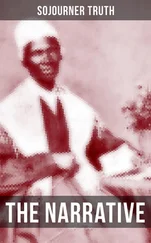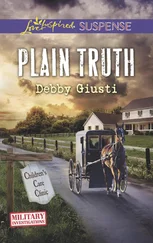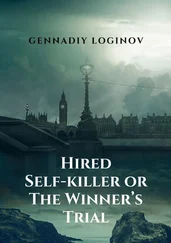Lizzie Munro would never have laid odds on the fact that one day, she’d be testifying against an Amish murder suspect. The girl was sitting at the defense table next to that high-powered attorney of hers, head bowed and hands clasped like one of those godawful Precious Moments figurines Lizzie’s mother liked to litter her windowsills with. Lizzie herself hated them-each angel too calculatedly cute, each shepherd boy too doe-eyed to be taken seriously. Similarly, looking at Katie Fisher gave Lizzie the overwhelming urge to turn away.
She focused instead on George Callahan, dapper in his dark suit. “Can you state your name and address?” he asked.
“Elizabeth Grace Munro. 1313 Grand Street, Ephrata.”
“Where are you employed?”
“At the East Paradise Township Police Department. I’m a detective-sergeant.”
George didn’t even have to ask her the questions; they’d been through this opening act so often she knew what was coming. “How long have you been a detective?”
“For the past six years. Prior to that, I was a patrol officer for five years.”
“Can you tell us a little bit about your work, Detective Munro?”
Lizzie leaned back in the witness chair-for her, a comfortable place. “For the most part, I investigate felony cases in East Paradise Township.”
“Roughly how many are there?”
“Well, we took about fifteen thousand calls last year, total. Of those, there were only a handful of felonies-mostly we see misdemeanors.”
“How many murders occurred last year?”
“None,” Lizzie answered.
“Of those fifteen thousand calls, do many take you into Amish homes?”
“No,” she said. “The Amish will call the police in if there’s theft or damage to their properties, and occasionally we’ll have to book an Amish youth for DUI or disorderly conduct, but for the most part they have a fairly minimal relationship to local law enforcement authorities.”
“Detective, could you tell us what happened on the morning of July tenth?”
Lizzie straightened in her chair. “I was at the station when someone called to report finding a dead infant in a barn. An ambulance had been dispatched to the scene, and then I went out there as well.”
“What did you find when you arrived?”
“It was about five-twenty A.M., near sunrise. The barn belonged to an Amish dairy farmer. He and his two employees were still in the barn, milking their cows. I taped the front and back door of the barn to secure the scene. I went into the tack room, where the body had been found, and spoke to the EMTs. They said the baby was newborn and premature, and couldn’t be resuscitated. I took down the names of the four men: Aaron and Elam Fisher, Samuel Stoltzfus, and Levi Esch. I asked if they’d seen anything suspicious or if they’d disturbed anything in the barn. The youngest boy, Levi, had been the one to find the baby. He hadn’t touched anything but a couple of horse blankets on top of the dead infant, which was wrapped in a boy’s shirt. Aaron Fisher, the owner of the farm, said that a pair of scissors used to cut baling twine was missing from a peg near the calving pen. All four men told me that no one had been found in the barn, and that no women in the household had been pregnant.
“After that, I went through the stalls, looking for a lead. The MCU of the state police was called in, as well. It was fairly impossible to take prints off the rough wooden beams and the hay, and any partial prints we found matched those of family members who would have had reason to be in the barn.”
“At this point, were you suspecting foul play?”
“No. I wasn’t suspecting much of anything, other than abandonment.” George nodded. “Please continue.”
“Finally, we found the site of the birth-in a corner of the calving pen fresh hay had been scattered to cover up matted blood. At the spot where the baby’s body had been discovered, we found a footprint in the dirt floor.”
“Did you determine anything about the footprint?”
“It would have belonged to a barefoot woman who wore a size seven shoe.”
“What did you do next?”
“I tried to find the woman who’d given birth. First I interviewed Aaron Fisher’s wife, Sarah. I found out that she’d had a hysterectomy nearly a decade ago, and was unable to have children. I questioned the neighbors and their two teenage girls, all of whom had alibis. By the time I got back to the farm, the Fishers’ daughter, Katie, had come downstairs. In fact, she came into the tack room where the medical examiner was with the newborn’s body.”
“What was her reaction?”
“She was very disturbed,” Lizzie said. “She ran out of the barn.”
“Did you follow her?”
“Yes. I caught up with her on the porch. I asked Ms. Fisher if she’d been pregnant, and she denied it.”
“Did that seem suspicious to you?”
“Not at all. It was what her parents had told me, too. But then I noticed blood running down her legs and pooling on the floor. Although she was reluctant, I had her forcibly removed by the EMTs and taken to the hospital for her own personal safety.”
“At this point what was running through your mind?”
“That this girl needed medical attention. But then I wondered if perhaps the defendant’s parents had never known she was pregnant-if she’d hidden the truth from them, like she’d tried to hide it from me.”
“How did you discover that she’d hidden the truth?” George asked.
“I went to the hospital and spoke to the defendant’s doctor, who confirmed that she had delivered a baby, was in critical condition, and needed emergency treatment to stop the vaginal bleeding. Once I knew that she had lied to me about the pregnancy, I got warrants to search the farm and the house, and to get a blood test and DNA from the baby and from the defendant. The next step was to match the blood in the hay of the calving pen to that of the defendant, the blood on the baby’s body to that of the defendant, and the blood type in the baby’s body to that of the defendant.”
“What came of the information you got from these warrants?”
“Underneath the defendant’s bed was a bloody nightgown. In her closet were boots and shoes in a size seven. All the lab tests positively linked the blood in the barn to the defendant, and the blood on and in the baby to the defendant.”
“What did this lead you to believe?”
Lizzie let her gaze rest lightly on Katie Fisher. “That in spite of her denial, the defendant was the mother of that baby.”
“At this point, did you believe that the defendant had killed the baby?”
“No. Murder’s rare in East Paradise, and virtually unheard of in the Amish community. I believed, at this point, that the baby was stillborn. But then the medical examiner sent me the autopsy report, and I had to refine my conclusions.”
“Why?”
“Well, for one thing, the baby had been born alive. For another, the umbilical cord had been cut by scissors-which made me think of the scissors Aaron Fisher said were missing; scissors from which we might have lifted a print. The newborn had died of asphyxia, but the medical examiner found fibers deep in the baby’s mouth that matched the shirt it had been wrapped in, suggesting that he had been smothered. That was when I realized that the defendant was a potential suspect.”
Lizzie took a sip of water from a glass perched beside the witness stand. “After that, I interviewed everyone close to the defendant, and the defendant herself. The defendant’s mother confirmed that a younger child had died many years ago, and that she had no idea her daughter was pregnant-nor any reason to think so. The father wouldn’t speak to me at all. I also interviewed Samuel Stoltzfus, one of the hired hands and coincidentally the defendant’s boyfriend. From him I learned that he’d planned to marry the defendant this fall. He also told me that the defendant had never had sexual intercourse with him.”
Читать дальше












